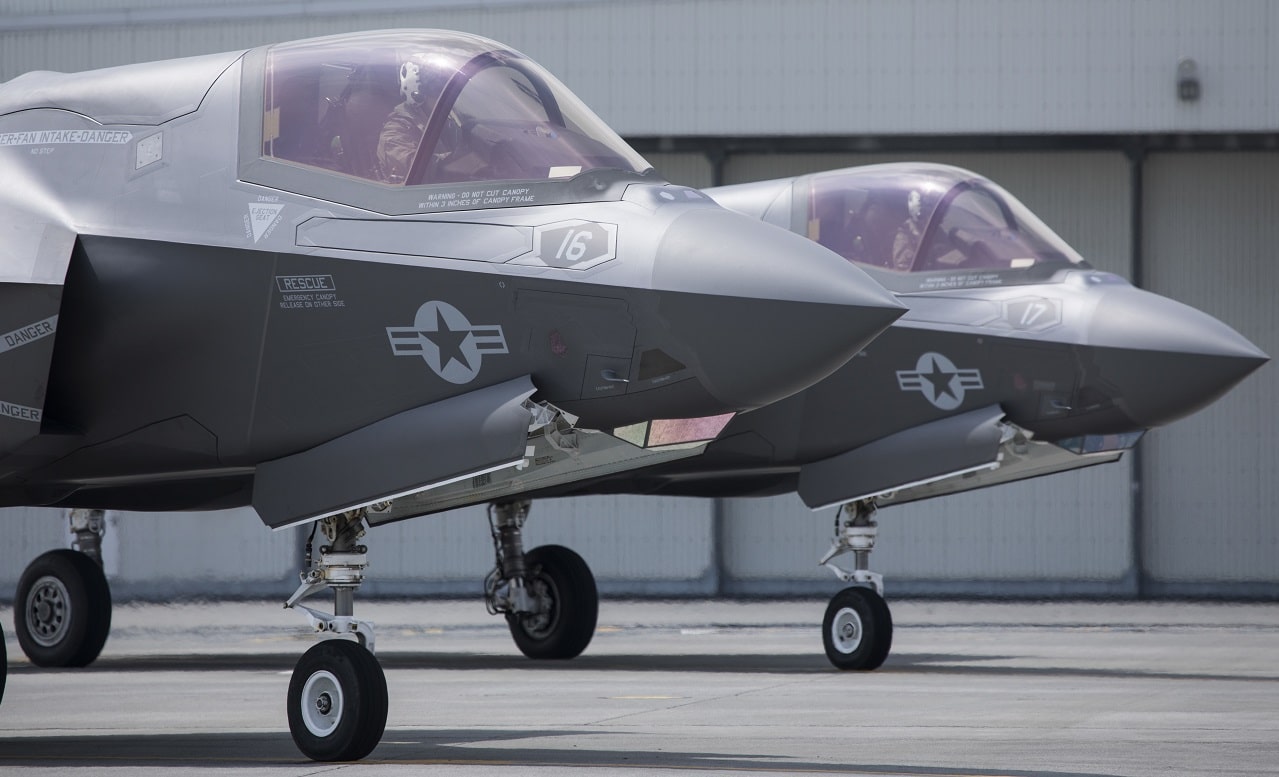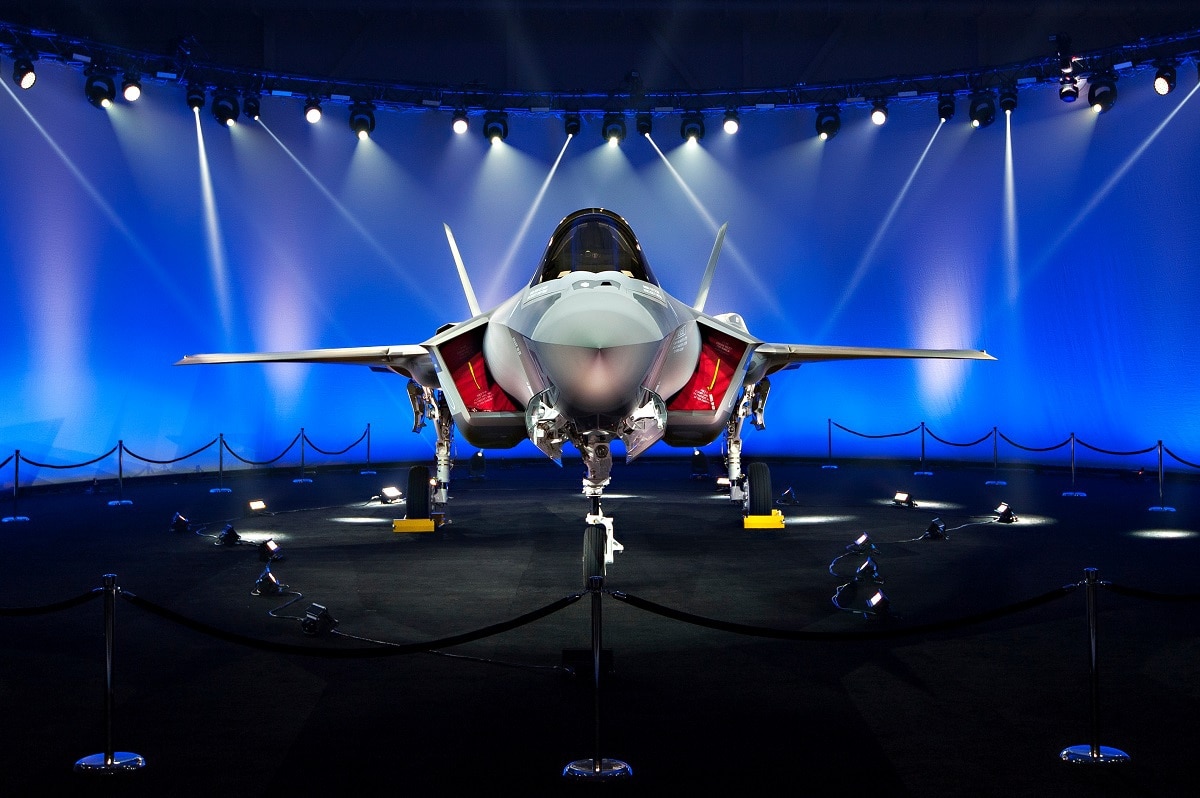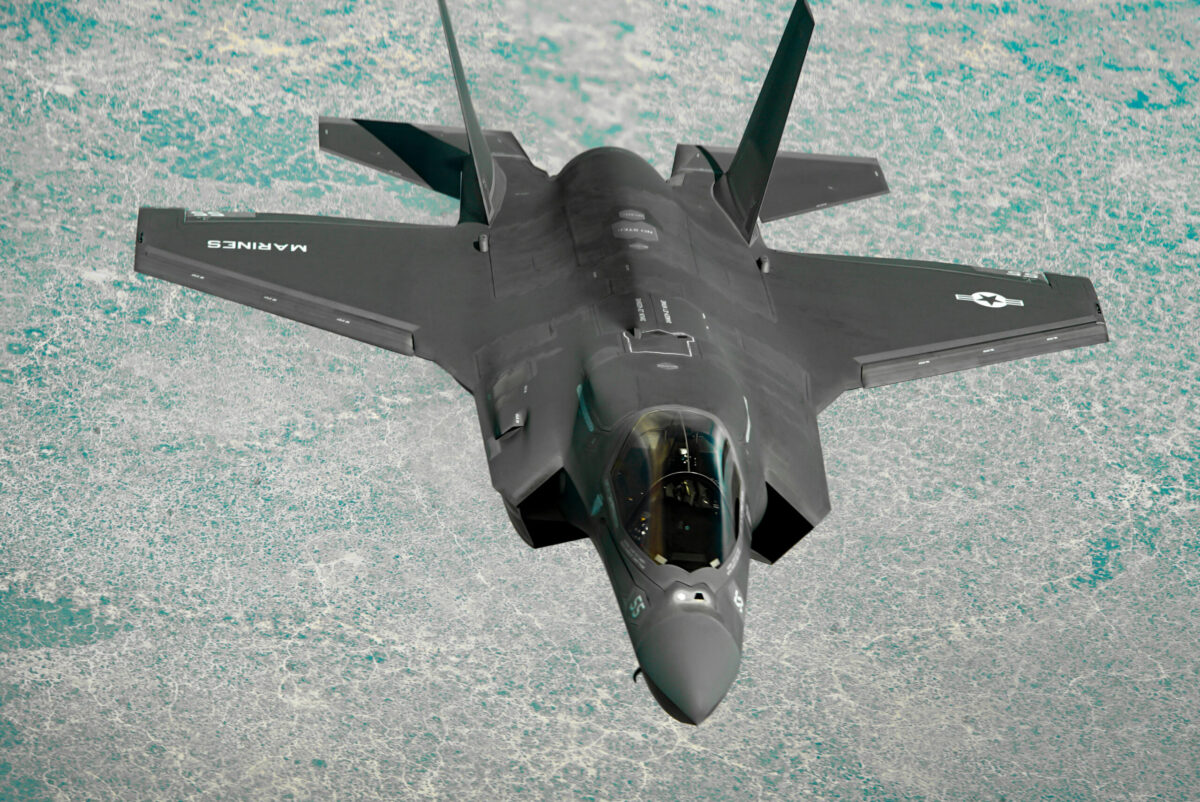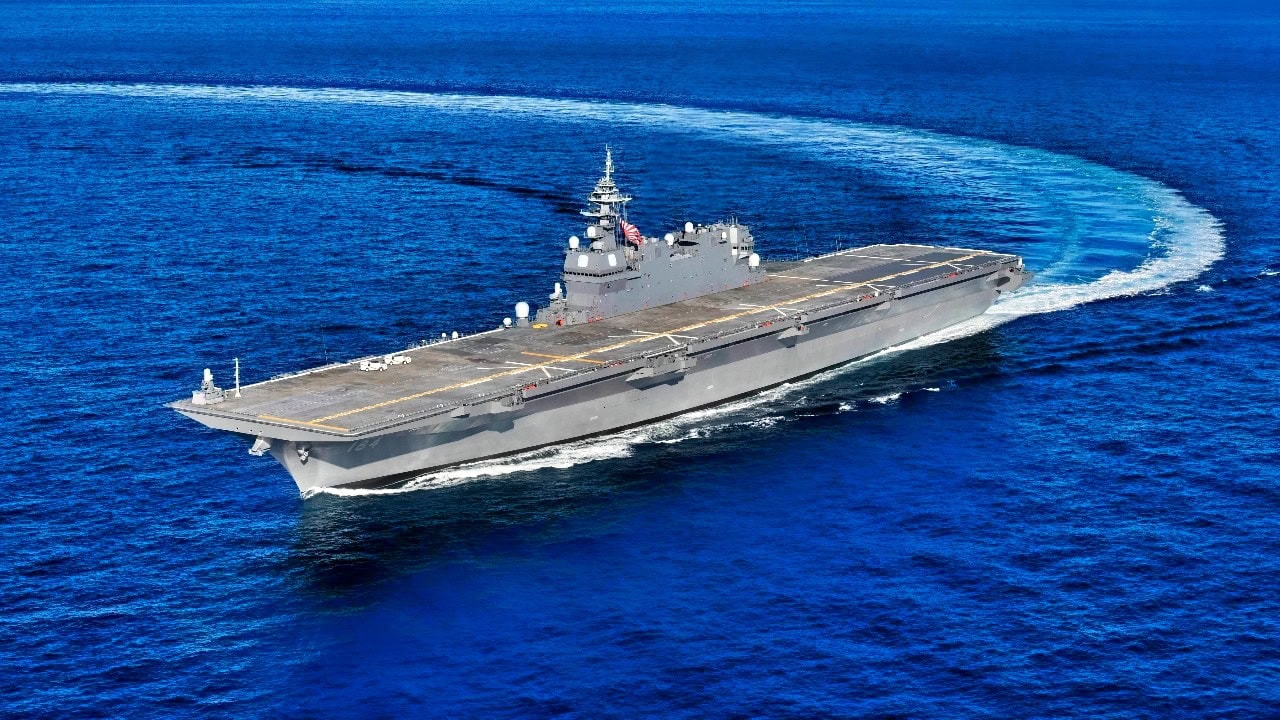Key Points and Summary: Japan’s Maritime Self-Defense Force (JMSDF) has introduced “mini-aircraft carriers,” such as the JS Kaga and JS Izumo, refitted to deploy F-35B stealth fighters. These vessels bolster Japan’s defense amid rising Chinese threats, offering faster, smaller platforms less vulnerable to anti-ship missiles.
-The F-35Bs’ advanced networking, via Multi-Function Advanced Data Link (MADL), enables seamless coordination with allied forces, forming a multi-nation airpower network in the Pacific. Japan’s enhanced defense budget also supports collaborations on advanced systems like Aegis radar and SM-3 missiles.
-This strategy underscores Tokyo’s commitment to countering China’s aggressive military modernization, particularly its pursuit of AI-driven “intelligentized warfare.”
Japan’s Mini-Aircraft Carriers: A Game-Changer for Pacific Defense
The Japanese Maritime Self-Defense Forces have surged into a high-speed, mobile, 5th-generation warfare capability by rapidly developing new “mini-aircraft carriers” armed with F-35Bs.
Photographs of the new mini-carriers were released by the JMSDF last year, showing a picture of a redesigned or refitted helicopter-carrying amphibious assault ship. Called the “JS Kaga,” the newly configured amphib-carrier is designed to transport F-35s, troops, helicopters, and other power-projecting and attack-enabling assets. The vessel operates with a maximum displacement of 27,000 tons with a full load and an 814-ft flight deck, a ship vastly smaller than US Navy aircraft carriers, which displace more than 100,000 tons.
The JS Kaga and its counterpart, the JZ Izumo, operate more like an F-35B-carrying US Navy America or Wasp-class Amphibious Assault Ships, which can carry as many as 20 F-35Bs on any given deployment.
This configuration makes sense for several reasons, particularly given Japan’s multi-billion dollar F-35B buy, which has progressed quickly in recent years. Yet another part of this equation is that Japan is massively revving up its defense budget, mainly because its defense papers specify a serious and fast-growing Chinese threat. In August of 2023, the Japanese Ministry of Defense requested a massive $52.9 billion defense budget, the largest in its history.
Flying operational F-35Bs from Japanese ships has been developing for several years, as the US Marine Corps conducted a joint US-Japanese multi-national exercise wherein Marine Corps F-35Bs landed on Japanese warships. This interoperability seems to have been a precursor to what is happening now with Japan’s growing fleet of “mini-carriers.”
Deploying smaller “mini-carriers” such as this makes strategic and tactical sense for Japan, as smaller platforms able to deliver F-35Bs are, of course, smaller and more challenging to hit as targets for Chinese anti-ship missiles. They are also likely faster and more maneuverable than massive US Navy aircraft carriers. They could likely operate in close coordination with forward-operating US Navy amphibs to project 5th-generation air power in any potential conflict.

U.S. Marine Corps F-35B Lightning ll aircraft with Marine Fighter Attack Squadron (VMFA) 121 prepare for takeoff from Marine Corps Air Station Iwakuni, Japan, April 8, 2021. VMFA-121 is the first forward deployed Marine F-35B squadron, capable of providing close air support and conducting strike missions in support of a free and open Indo-Pacific. (U.S. Marine Corps photo by Cpl. Jackson Ricker)
Japan Mini Aircraft Carrier Advantage
Coordinated Navies are significant because the US and its Pacific allies operate with a decisive 5th-generation advantage in the air. China operates the J-20, but that is a land-launched platform incapable of projection power from the ocean; the J-20 may also be more vulnerable to F-35s and F-22s, depending upon the range and fidelity of its sensors and the range and accuracy of its weapons systems. Regardless, the US and its allies are increasingly able to operate a large force of F-35s to counter or contain China from the air. This kind of tactical thinking is likely a significant reason why the Japanese MOD is both acquiring F-35s and building “mini-carriers.”
Countering China
Amid a growing threat from China, Japan has dramatically increased its military budget, expanded the capabilities of its armed forces, and developed a domestic arms industry. Japan’s Ministry of Defense (MoD) has recently made substantial progress in collaborative weapons development with the United States on systems such as Aegis radar, the SM-3 Block IIA, and Evolved Sea Sparrow Missile Block 2 in recent years. Therefore, Japan’s concern about China has been accelerating in recent years to a large extent, as evidenced by the Japanese MoD’s “Defense of Japan 2022.”
The Japanese document, as explained in an analysis published in Warrior Maven in January of 2023, explicitly cites several key increasing threat areas related to Russia and China. The text of the report cites China’s growing use of AI and networked warfare, provocations regarding the Senkaku islands, increasing cooperation with Russia, and strengthening civil-military fusion.
“Chinese military trends, combined with insufficient transparency about China’s defense policies and military affairs, have become a matter of grave concern to the region including Japan and the international community, and these trends have been intensifying in recent years, “ the report says, as quoted in the Warrior report.

Japan F-35B Rollout Ceremony.
China’s use of AI is referred to in the Japanese report as “intelligentized warfare,” meaning weapons systems, surveillance assets, and data processing speeds and capabilities are massively improved.
China’s pursuit of “intelligentized warfare” is identified in the Japanese report and is often cited in Pentagon reports on China’s growing threat. In considerable measure, the concept is to replicate or copy multi-domain, joint-service seamless networking and data sharing across the force. This effort appears quite similar to the Pentagon’s now-implementing Joint All Domain Command and Control effort (JADC2)
The 2023 Warrior Maven analysis describes “Intelligentized warfare” as something that can impact a wide sphere of weapons systems and technology programs, particularly in China, where there is not a civilian-military divide in any respect regarding budgets and the exchange of technology. For instance, satellite data can be processed and transmitted more quickly, and warships, rockets, and even nuclear weapons can receive and organize upgraded targeting information, potentially enabling weapons to change course in flight.
It may not be entirely clear how far along the PLA is with these efforts, yet the clear Chinese intent is documented extensively in US and Japanese defense publications. Should China evolve in this capacity, it would place the PLA on closer footing with the US military regarding multi-domain target-data sharing, joint operations, and sensor-to-shooter time improvements across a combat domain.

A U.S. Marine Corps F-35B Lightning II, assigned to Marine Medium Tiltrotor Squadron 164 (Reinforced), 15th Marine Expeditionary Unit, prepares to receive fuel from a KC-10 Extender assigned to the 908th Expeditionary Aircraft Refueling Squadron, during an in-air refueling mission supporting Operation Octave Quartz with armed aerial patrols over Somalia, Jan. 5, 2020. Marine F-35Bs support to OOQ demonstrates the U.S. militarys ability to hold adversaries such as al Shabaab at risk with flexible, precise and lethal force capable of rapidly responding anywhere on the globe. The mission of OOQ is to reposition U.S. Department of Defense personnel from Somalia to other locations in East Africa. (U.S. Air Force photo by Staff Sgt. Taylor Harrison)
Japan & F-35B
Given this threat scenario, the Japan Maritime Self-Defense Force (JMSDF) should rapidly acquire F-35Bs, as they operate with a secure, high-speed data link called Multi-Function Advanced Data Link (MADL) able to network across all countries operating F-35s. This enables a multi-national, large-scale, semi-circle-like formation of F-35s involving the US Navy, South Korea, Australia, and Singapore further south. The additional bases built in the Philippines might also allow the US and its allies to add F-35s there and “fill in” a gap in the semi-circle between Japan, Australia, and Singapore.
About the Author: Kris Osborn
Kris Osborn is the Military Technology Editor of 19FortyFive and President of Warrior Maven – Center for Military Modernization. Osborn previously served at the Pentagon as a highly qualified expert in the Office of the Assistant Secretary of the Army—Acquisition, Logistics & Technology. Osborn has also worked as an anchor and on-air military specialist at national TV networks. He has appeared as a guest military expert on Fox News, MSNBC, The Military Channel, and The History Channel. He also has a Masters Degree in Comparative Literature from Columbia University.

